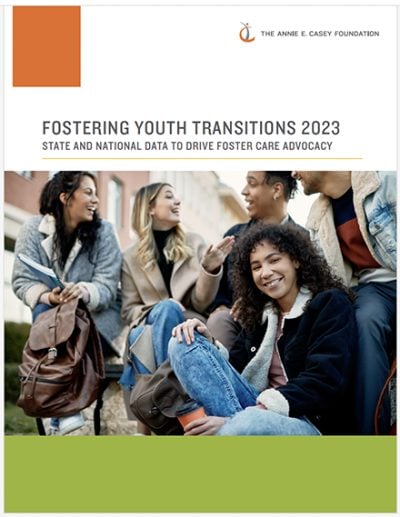The Pandemic's Toll
The COVID-19 pandemic accelerated a 14-year drop in the number of youth in foster care.

Read or Download the Press Release
This Annie E. Casey Foundation brief examines the experiences of teenagers and young adults in foster care as reported by all 50 states, the District of Columbia and Puerto Rico. The brief includes an analysis of comprehensive data spanning 15 years and is accompanied by data tables and source notes.
"Fostering Youth Transitions 2023" examines how young people ages 14 to 21 were faring before and after they left foster care between 2006 and 2021 and how child welfare systems supported their transition to adulthood. The data show that government systems must do more. It is vital that advocates and policymakers align foster care policy with healthy adolescent and young adult development and partner with youth to make strategic investments in their futures.
The brief's recommendations build on the work of the Foundation’s Jim Casey Youth Opportunities Initiative®. The systems-change effort is guided by research that shows young people in foster care need permanent and meaningful relationships with supportive adults, reliable resources to meet basic needs and accessible opportunities for education and work. Policymakers, child welfare system leaders, practitioners, advocates and communities are encouraged to partner with young people and families who have experienced foster care and use “Fostering Youth Transitions 2023” data to develop solutions that support permanence, health and long-term success.
Despite small gains, systems still are not connecting enough young people to the vital resources and connections necessary for successful adulthood. Advocates and policymakers should use the state profile data to assess their state’s performance against national trends and build strategies to help young people lead healthy, happy lives after foster care — regardless of background and experience.